Shared Autonomous Vehicles Will Make Ride Services 30 Times More Attractive

Uber rang the bell for a radical shift in the transportation industry, adding lower prices to the convenience of the taxi model. During the next ten years, we think shared autonomous vehicles (SAVs) will disrupt the transportation industry even more radically. As shown in ARK’s recent research, Google [GOOG] could introduce a shared autonomous car system that could be priced at just $0.35 per mile, even cheaper than an Uber, as shown below, causing a step function increase in demand. In short, after shared autonomous vehicles are launched in any geography, ARK expects hired vehicle miles to increase roughly thirty fold.
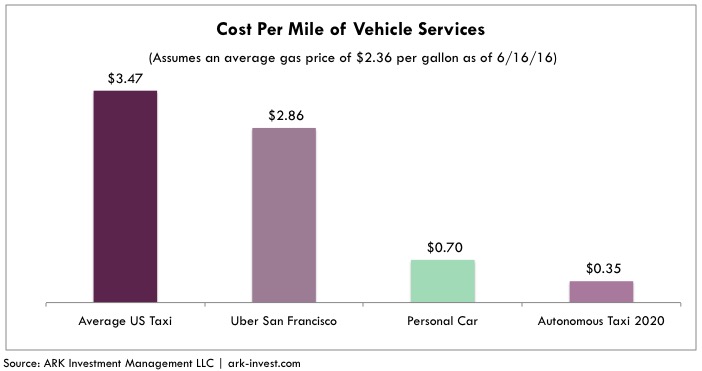
Based on ARK’s research, Uber’s successful price cutting measures in San Francisco provide a good gauge of the demand response to shared autonomous vehicles when they hit the streets. As shown below, ARK estimates that when Uber lowered prices in San Francisco by a whopping 60% in 2013 and 2014,[1] miles driven in Uber vehicles increased eight fold.[2] Meanwhile, the average number of trips per taxi declined from 700 per month to just 504.
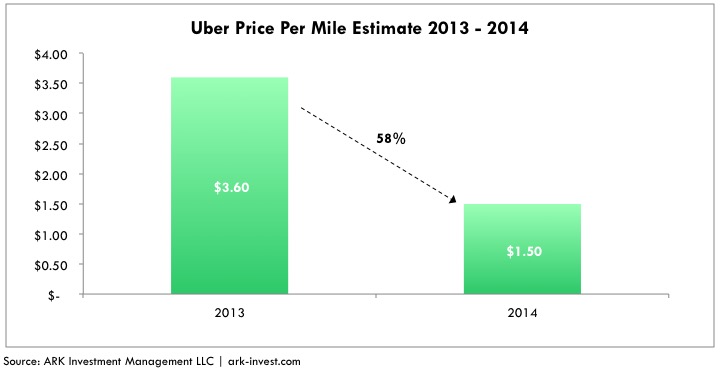
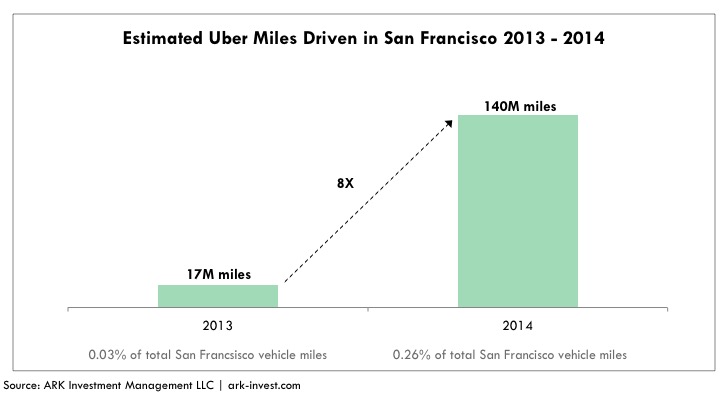
Uber has taken share from not only taxi drivers, but also from private vehicle miles and other transportation services. The share of miles in mobility-as-a-service (MaaS) offerings [3] as a percent of total vehicle miles traveled in San Francisco has increased from 0.4% to 0.6% in 2013 to 2014.[4] As prices fall further with the launch of shared autonomous services, we think MaaS is likely to take a much larger share of all miles.
ARK believes shared autonomous vehicles will be orders of magnitude cheaper and more convenient than taxis are today. Hailing an autonomous car via a mobile app and then riding without a stranger in the front seat will likely be a much more pleasant experience. ARK estimates that the cost of the inconvenience associated with traditional taxis is roughly $1-2 per mile.[5] Consequently, SAVs likely will be priced 93% below the average US taxi as shown below. Given the price elasticity of demand illustrated from the San Francisco example, ARK assumes that SAV MaaS miles driven should soar thirty fold in the first year of service.[6]
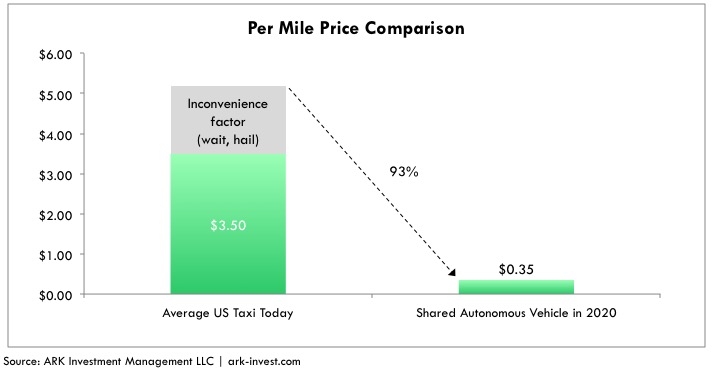
Taxis travel 3.5 billion miles annually in the US today,[7][8] only 0.1% of 3 trillion total vehicle miles traveled.[9] ARK’s analysis suggests that SAV miles will exceed 100 billion miles shortly after introduction of autonomous taxi service, as shown below.[10]
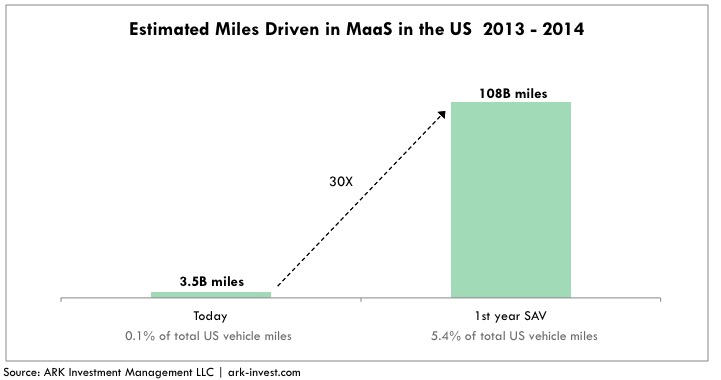
While this analysis covers the first year of introduction of autonomous taxis, demand should continue to build over time in our opinion. Some customers already are giving up personal cars and licenses for Uber, a trend that we think should accelerate with time. Our research shows that even today, vehicle owners (who effectively have prepaid for travel) use Uber for its convenience, suggesting that the old system of mobility was inefficient and broken. ARK expects the auto industry to undergo a dramatic transformation during the next five years, beginning as soon as this year.






